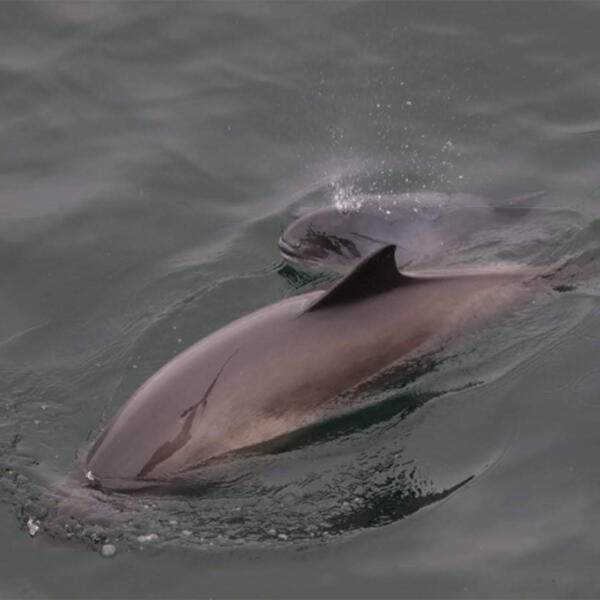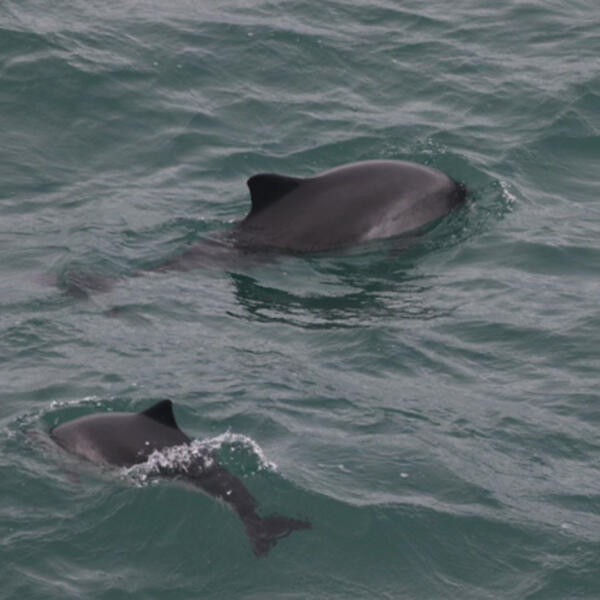Detecting click sounds
Harbour porpoises use click sounds for echolocation. Researchers detect these sounds using dedicated monitoring stations at the wind farm and nearby. When combined with aerial surveys, this provides insight into the number of harbour porpoises in the area. Previous research has shown that these mammals avoid wind farms during the construction phase.
“Harbour porpoises have very sensitive hearing and are disturbed by noise in their environment”, explains Marin van Regteren, a marine ecologist at Eneco, which is part of the Blauwwind consortium. But what happens post-construction?
Impact of operational wind farms on harbour porpoises
The research programme is examining the impact of wind farms and underwater noise on harbour porpoises. This specific aspect of the programme is looking at whether these marine mammals return to an area after a wind farm has been constructed. Harbour porpoises are particularly affected by pile driving, the process where wind turbine foundations are driven into the seabed.
Marin says, “But there’s no pile driving during the operational phase, and, so far, our research indicates that harbour porpoises have indeed returned to the area.”
More harbour porpoises within the wind farm than outside
To determine whether there are fewer harbour porpoises within the wind farm, data from outside the site was needed. The researchers recorded the number of harbour porpoises a few kilometres north of the wind turbines. They used a reference site roughly the same size as the Borssele wind farm, with similar water depth, seawater temperature and distance to shore — but with no wind turbines.
“We found virtually no difference in the number of harbour porpoises between the two areas”, reveals Marin. “If anything, our monitoring stations detected slightly more of them within the wind farm than outside.”
Borssele quieter than immediate surroundings
Wind turbines also generate noise when operational. But as Marin points out, the wider Borssele area is generally busy and noisy: “Extending approximately from the Port of Rotterdam to the Port of Antwerp, the area sees a lot of shipping traffic and other activity. Many people use this stretch of sea for a variety of purposes.”
What does this mean when it comes to noise levels? “That’s the interesting part. Average noise levels turned out to be between two and six decibels lower within the wind farm than outside. There’s less shipping traffic and therefore less noise.”




